The designer's guide to making budgets work
Smart budgeting: 11 financial tips from the world's best design studios on how to turn creativity into cash.
There's an old-fashioned rule of thumb in the restaurant trade on how to price a dish: take the cost of the ingredients, add tax and times it by three. The creative trade, by comparison, is about as simple to 'price' as a Jimmy Five Spice menu. Each 'ingredient' in a creative project is almost impossible to cost tangibly, meaning the industry is doubly liable for undercharging for expertise, and overcharging for time.
The result can equate to cashflow problems at best, and in worst case scenarios, trading-deficit and outright bankruptcy.
The excuse that budgets and business should be left to the account heads is a nonsense in today's industry. The most impressive young creatives on the books of global agencies are just as likely to understand the nuances of trade and profit lines as they are in creating mood boards and brand statements. And with good reason.
With more than a third of the creative industries working on short-term contracts or self-employed, at some point in their careers every designer will have to get their head around a profit and loss line: whether that's as a business owner, sole-trader or a creative head at a mega agency.
01. Laziness doesn't add up

What's key to understand is that the financial and creative sides of a business have more than a symbiotic relationship. While one area cannot survive without the other, the fact that the two complement and strengthen each other to a business' advantage means that award-winning creative work is not just funded by smart budgeting, but is wholly dependent upon it.
"This is commercial creativity and if you don't get the commerce you won't get the most out of the creativity," says Simon Manchipp, founder and executive strategic creative director at SomeOne.
"If you can work Photoshop, you can read a profit and loss statement. And it'll give you more insight into how to make the project rock — this time and next time."
Get the Creative Bloq Newsletter
Daily design news, reviews, how-tos and more, as picked by the editors.
02. Learn the basics
On a very basic level, a budget dictates how much you have to invest in a project. The quality of the creative vision should always dictate the numbers – that's what you've sold the client after all.
However, a solid budget ensures you don't overreach, overspend and end up running out of money. For that reason, the very best budgeting gets the greatest value at a creative level, while maximising profit margins at a business level.
03. Pitch or cost?
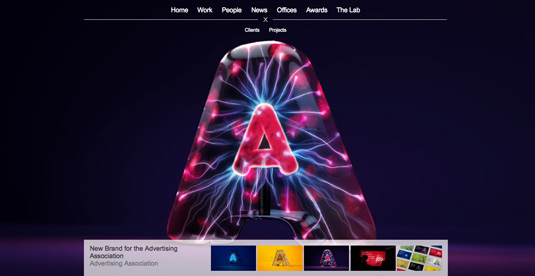
A creative budget is generally arrived upon in one of two ways: a regular client tells its rostered agency of a business objective and gives them an approximate sum to deliver it, or, a brief is put out to tender, to which an agency or studio sells a creative vision for a set price.
The success of a pitch rests on reading the brief and responding with a vision that delivers what is asked. The success of the project, by comparison, rests on delivering this for the widest possible budget surplus.
"Sometimes at pitch stage clients just want to know ballpark figures," says The Partners' Greg Quinton. "Sometimes we have to flesh out every detail, every person, every hour and every penny."
"Our preference is always to talk about the work first, and look at budgets after. But we don't go into that situation blind, we try and identify how serious they are."
04. Always price realistically
The common fear is that by optimistically pricing your work, you will be less competitive in the tender. But this is far from true. What's much more damaging is not being able to price your pitch realistically.
By underpricing your proposal you run the very real risk of not only gaining little profit, but by overspending to the detriment of your business's bottom line.
Fortunately there are some excellent resources available online on how to competitively price a pitch, including this guide from The Cultural Enterprises Office.
Our preference is always to talk about the work first, and look at budgets after
Last year's Design Industry UK Business Services Review discovered that of direct fee-paying clients (that is, those who put out open tenders), only 18 per cent of new businesses went to the lowest priced pitch.
Creative vision is what wins business. Yet delivering that vision on a budget that maximises creative impact, while protecting your profit margin, is a delicate balance.
How do you arrive on a sensible percentage of the client fee to spend? It's a dark art, and one that differs from agency to agency.
"We estimate how long it'll take, how many people will be involved, what our overheads are and what the hourly rates attached to the people are, and bingo: an estimate," says Manchipp.
05. Being cautious is key

A typically 'healthy' business in the UK will aim to run at between a 25 and 35 per cent profit margin, according to the Department of Trade and Industry.
With a project budget covering direct costs such as materials, equipment, location hires, perhaps specialist photographers or illustrators; and overhead costs including permanent staff and other operational elements, it's important to have a firm grasp of what expenditure the project is likely to have. Not necessarily to the bean, but certainly as realistically forecasted as you can manage.
Being cautious is key, as is planning in a contingency sum of around 5-10 per cent of the project budget to pay for any unexpected costs without hitting your surplus.
06. Manage working budgets
The assumption that a budget is rigid is one that hobnails even the best business brains. Successful budgeting is about constant management, and not eagle-eyed expense watching. In order to get the most out of a budget, you have to put in a great deal of time, energy and expertise.
For example, partitioning off creative spend at the beginning of a project and relying on a contingency fund should any of the individual areas run over results in what's called 'silo' thinking.
What better than to pool resources or use hired facilities for multiple projects, or offer more work to a director or developer already working on an existing project? This is where studio managers and production heads earn their crust, and underlines the critical relationship between account team and creative management.
"Like any relationship, you have to work together, on the big stuff and the tiny details," says Quinton. "Projects rarely, or never, go exactly to plan because they involve one important variable – and that's people. 'Enforcing budgets' as a term is too black and white."
"Clients and people in general require flexibility and understanding. Budgets are more like a plethora of greys."
07. Always know your costs
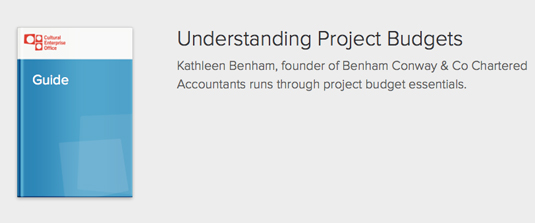
The age-old assumption that a feud exists between accounts and creatives has long been dispelled. Client relationships don't hang by a spreadsheet, and budgets can be renegotiated. But it's cashflow that remains king.
Your project might have a number of upfront costs which the payment schedule doesn't take into account, or material costs might only occur in the first few stages of a project. In these instances it's key to map your creative production plan against the project budget and cashflow.
"Remember when you are looking at your budget, don't just go through all the income, costs and contingency – also [ask yourself] 'am I going to run out of money at any point?'," states Kathleen Benham, founder of Benham Conway & Co Chartered Accountants, whose excellent resource, Understanding Project Budgets, is available for free on the Cultural Enterprise Office site.
"It might be that you have a surplus at the end of the project but part way through you have a deficit," she says.
"If you can identify that this will happen in advance, you can say, 'We've done the cashflow for this project and instead of giving us 40 per cent, 40 per cent and 20 per cent, can you give us 60 per cent, 20 per cent and 20 per cent?' Your funder would much rather your project works."
08. Make budgets work harder
Getting the most creative clout from a project budget is what the world's best creative directors are celebrated (and paid) for. Yet most of us are unlikely to be dealing with the kinds of six figure expenditures big agencies play with.
There are ways to make a budget go further without cutting corners, though, whether working on a megabrand or a local restaurant logo.
Operational costs tend to be fixed, but bought-in talent and other material costs can be negotiated and made to work harder. All too often agencies look to a further service to supply creative talent – usually an agency working on behalf of a model, director, illustrator or photographer.
Agencies vary wildly in their commission fees, but will reward repeat bookings and are often open to negotiation for those on their books who may be less in demand. Making good contacts at key agencies means that you will often get a heads-up on up-and-coming talent that doesn't carry the heftier rate of more established names.
09. Invest in new talent
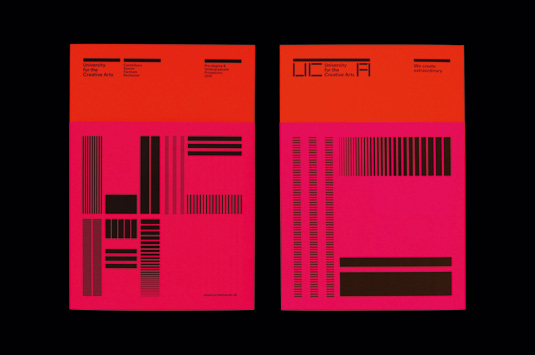
The industry is dependent upon new talent, though, and all of the creatives we spoke to advocated an awareness of degree shows and new design talent awards.
The likes of WPP, McCann and BBH offer hotly contested internships and graduate placements. Why? Well magnanimousness and altruism aside, one reason is because (while arguably it shouldn't), young talent costs less.
New Designers, the D&AD New Blood festival and countless graduate shows should all be annual fixtures in your diary, not because they are cattle markets for cheap talent, but because they are exhibitions of young creatives who, if you invest in them, have the potential to deliver astonishing creative work as well as manage a budget.
The same should be applied to exporting work. This is especially true of developer and coder 'farms' where costs (and even results) might be attractive, but support and licensing issues are widely reported.
There are many excellent examples of international creative services if you research properly, and some in-depth guides available from resources such as the Design Business Association are a solid starting point for the export implications to your business.
Finding and commissioning individual international illustrators, photographers and other creatives is straightforward. Outsourcing artwork production and coding to overseas companies carries increased liabilities.
10. Keep good clients happy
Whenever the work is produced, repeat business is famously more profitable than new business, so keep your most profitable clients the happiest. With cashflow in mind, some agencies review their client roster as often as each month.
Doing so enables them to forecast your cashflow effectively and drop or refuse non-or-low profit work. There's little point taking on a project which dents the bottom line. Without good reason, anyway…
Indeed, sometimes it is worth lowering your rates, whether as a loss-leader in anticipation of more regular business, or as a pro-bono gesture to a charity or other cause. In these instances timing is crucial. Free or discount paying clients won't mind waiting until your cashflow is in a stronger position before you undertake the work.
11. Consider a skills-swap
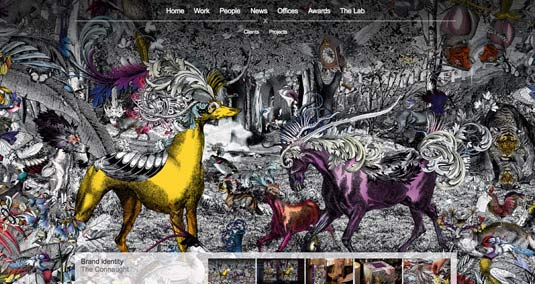
If you're one of the 5.2million SMB's in the UK, you might want to consider investigating skills swaps. Networking events and creative industry sites in your area will introduce you to potential collaborators.
Perhaps you need an app developing, which you could exchange for a logo and branding redesign. Consider what your lowest in-house costs are and offer those out to other local businesses which may need something in return.
Budgeting is one of the less glamorous areas of expertise in the creative trade, but ultimately it is one which studios have an element of control over. "The pitch process dictates all," explains Quinton, underlining that the creative concept must always come before a costing.
"Anyone who cares about the work wants to avoid pitch decisions being made on budget alone." Managing that budget and getting the most out of it is what commercial creativity is really all about.
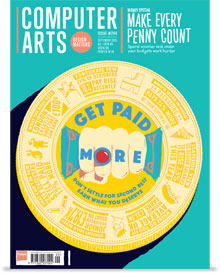
The full version of this article first appeared inside Computer Arts issue 244: Earn More as a Designer – packed full of financial tips – on sale now.
Liked this? Try these...
- The 20 best watches for designers
- Disney artists bid to recapture classic hand-drawn animation
- Download the best free fonts

Thank you for reading 5 articles this month* Join now for unlimited access
Enjoy your first month for just £1 / $1 / €1
*Read 5 free articles per month without a subscription

Join now for unlimited access
Try first month for just £1 / $1 / €1

The Creative Bloq team is made up of a group of art and design enthusiasts, and has changed and evolved since Creative Bloq began back in 2012. The current website team consists of eight full-time members of staff: Editor Georgia Coggan, Deputy Editor Rosie Hilder, Ecommerce Editor Beren Neale, Senior News Editor Daniel Piper, Editor, Digital Art and 3D Ian Dean, Tech Reviews Editor Erlingur Einarsson, Ecommerce Writer Beth Nicholls and Staff Writer Natalie Fear, as well as a roster of freelancers from around the world. The ImagineFX magazine team also pitch in, ensuring that content from leading digital art publication ImagineFX is represented on Creative Bloq.
